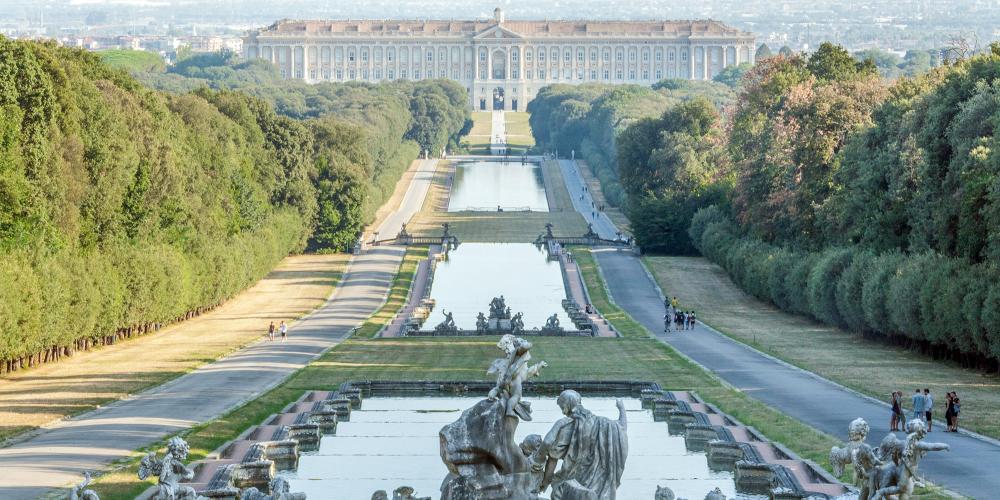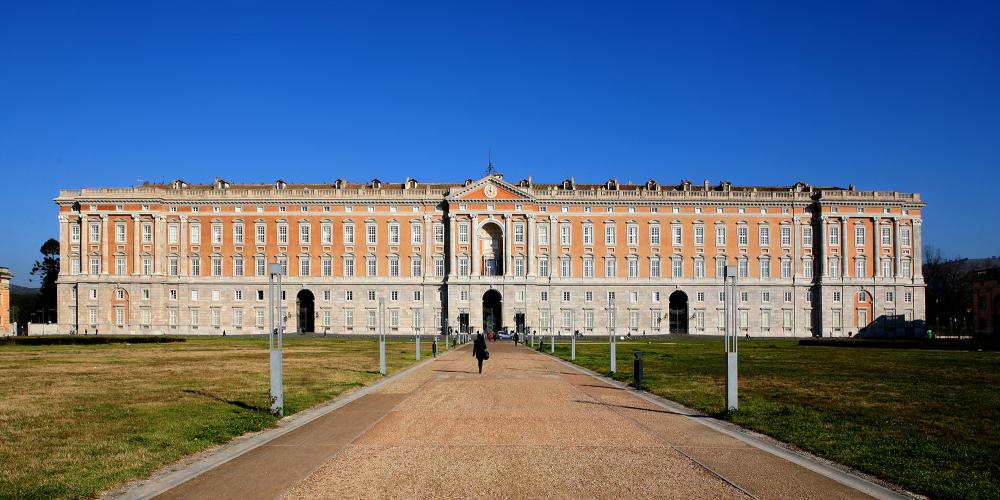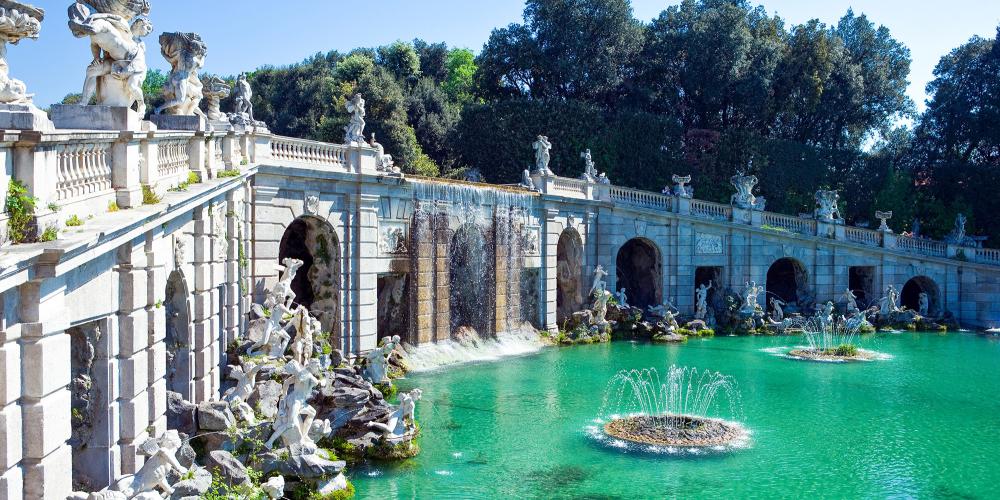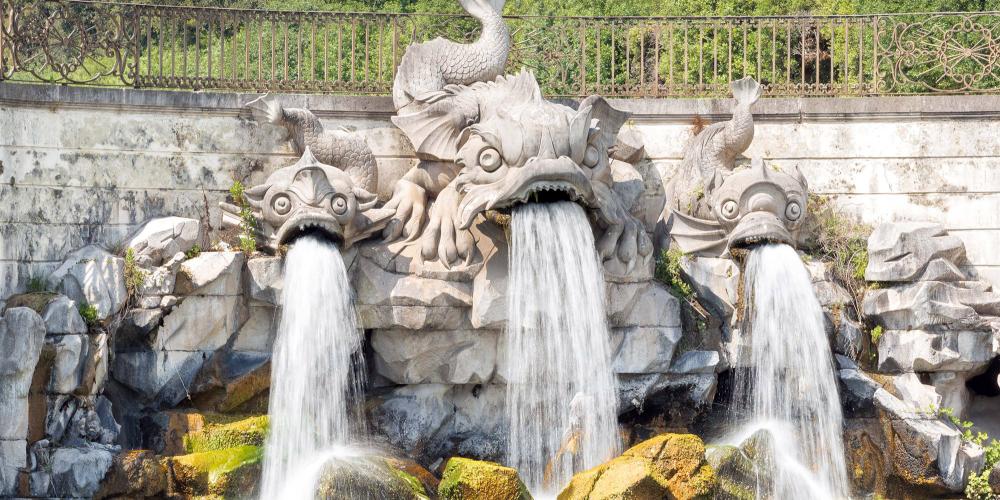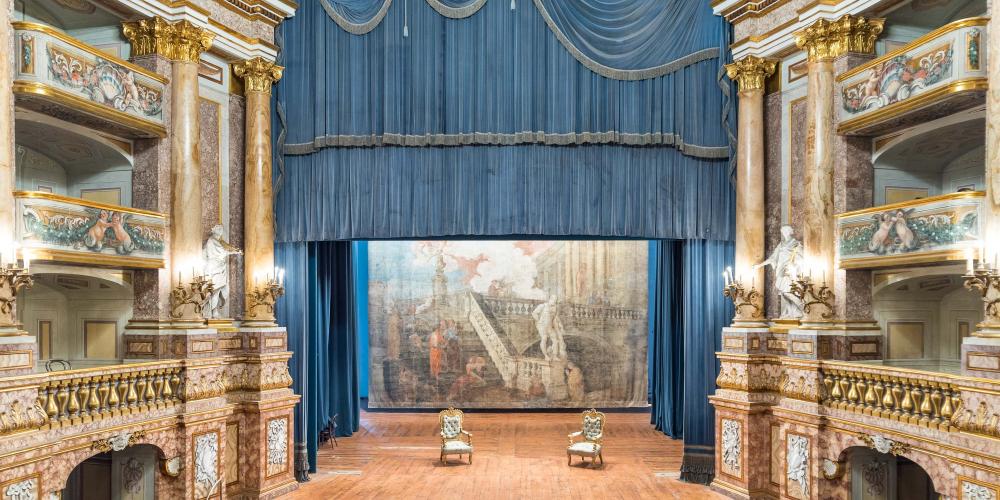Caserta Royal Palace and Park, Italy

One of the last great European gardens, Caserta Royal Palace and Park borrowed from creations such as Versailles and the 16th century villas in Rome and Tuscany. But unlike those sites, this Italian masterpiece combined manicured gardens and natural woodland, with hunting lodges and a silk factory. It took the successes of previous designs and created a world of its own. For instance, the English Garden, set within the complex, is one of the greatest, oldest, and most important picturesque spaces created in Europe.
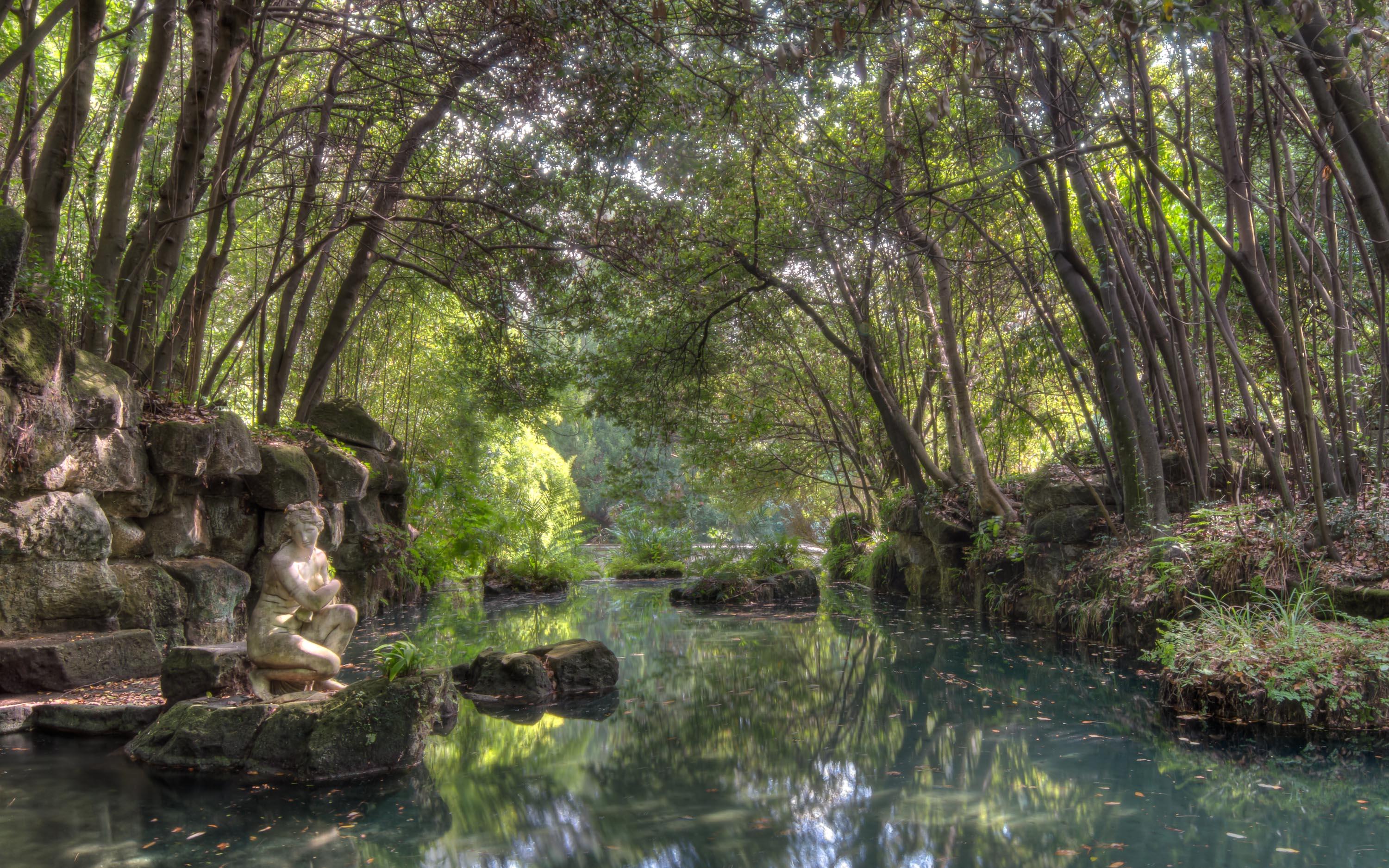
This respect for, and "improvement upon," nature became the Caserta Palace's calling card, and its seminal influence is undeniable. It was, for example, the first Italian landscape garden. But, the grounds also drew from the trends spreading across Europe at the time—namely providing leisure to the royals and accommodating botanical research. Hundreds of rare and precious plants from around the world were brought to Caserta, and still grow there today.
Importantly, the design was also singular because it shows the change in approach in the relationship between royals and the rest of the community. A silk factory and associated workers’ homes were included in the layout and the natural forests were incorporated. It is an eloquent expression of the Enlightenment in material form, integrated into, rather than imposed upon, its natural setting.
Discover the gardens of Caserta and follow the network of fountains and basins that stretch out from the palace to a waterfall in the forest. Past the castle-like playhouse and the pond that hosts mock sea battles, the English Garden—one of the estate's highlights—has a lake and decorations that mimic ancient ruins. You can explore this vast and beautiful space by bike or horse and cart to explore as much as possible. The grounds are so impressive that they have been the set for major films such as Star Wars and Mission Impossible.
A Complex Built for Kings
Charles of Bourbon conquered the kingdom of Naples and entered the city on May 10, 1734. The King then built the Royal Palace as the centre of his new Kingdom of Naples in 1750. The choice of the location for the kingdom’s administrative capital fell on the plains of Terra di Lavoro, in the site dominated by the 16th century Acquaviva palace. Charles already owned a hunting lodge in Caserta, which reminded him of the landscape surrounding his Royal Palace of La Granja de San Ildefonso in Spain. The Royal Palace of Caserta was one of the largest buildings erected in Europe during the 18th century.
King Charles of Bourbon commissioned the building of Caserta’s Royal Palace in 1752 to his architect Luigi Vanvitelli. The palace has five floors and 1,200 rooms including the Court Chapel, the Palatine Library, and a theatre modelled after the Teatro San Carlo of Naples. The royal rooms are dated from the end of the 18th century, and the “new apartment” from the beginning of the 19th century. Inside, the vaulted arcade connects three octagonal vestibules leading to the four courtyards, characterised by niches and wide corner apses.

In 1997, the palace was designated a UNESCO World Heritage Site—its nomination file described it as "the 'swan song’ of the spectacular art of the Baroque period, from which it adopted all the features needed to create the illusions of a multi-directional space."
A Walk in the Park
As visitors immediately realise, the Royal Park is an integral part of the estate. Its key features include the garden, which stretches for 120 hectares, partly on hilly terrain. The park starts from the back façade of the palace and flanks a long promenade with artificial fountains and cascades. There is also a spectacular botanical garden, called "The English Garden," designed in the 1780s.
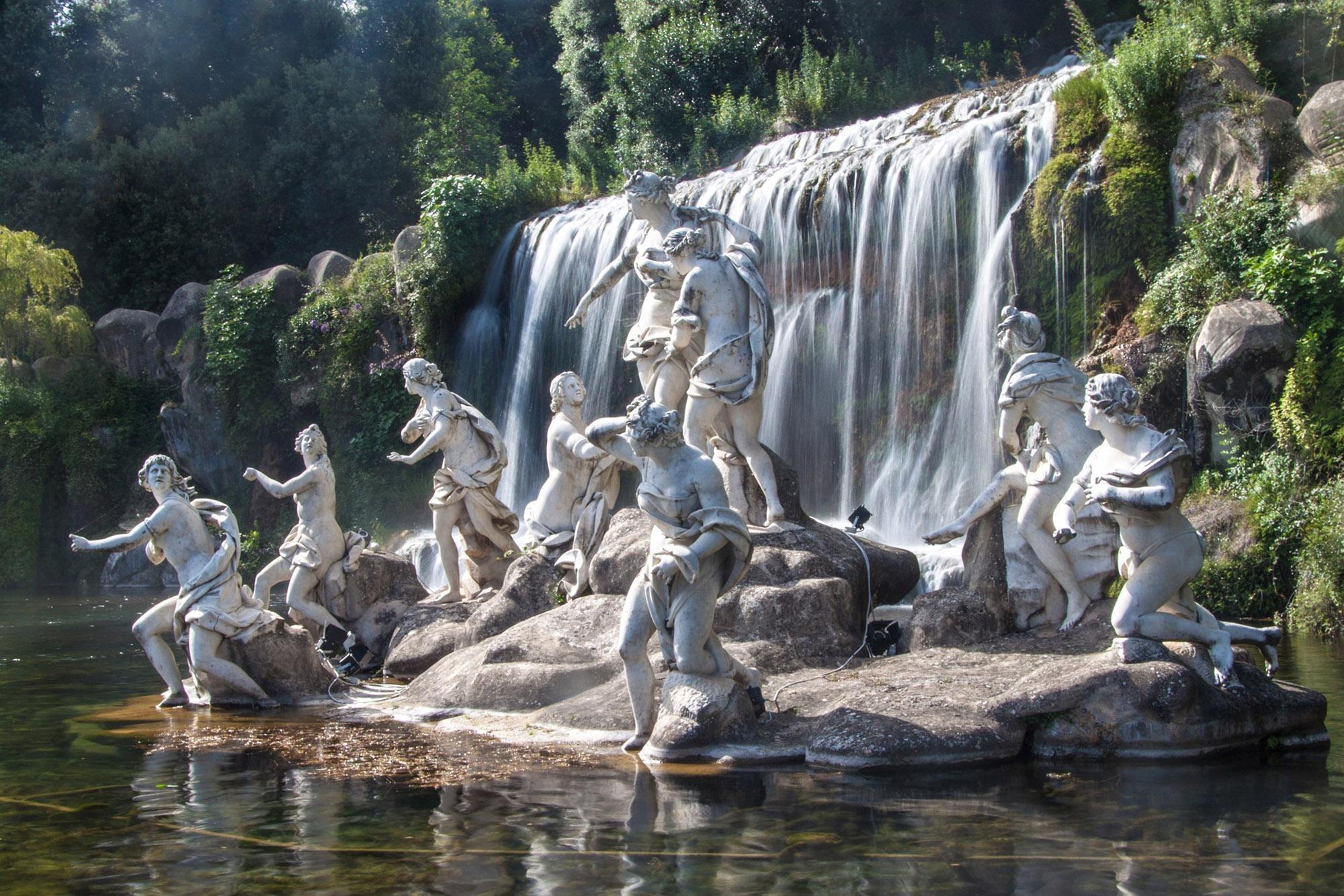
Construction of the garden started in 1753, the same year as the construction of the Carolino Aqueduct, which directs waters from the slopes of Mount Taburno to feed the fountains of the royal gardens and irrigate the plants. The park was completed by Carlo Vanvitelli, who, while simplifying the design of his father Luigi, was a faithful implementer, retaining the compositional rhythm of the alternation of fountains, water bodies, meadows, and waterfalls. At the top of the park, starting from 1785, at the request of Queen Maria Carolina, Vanvitelli, and the German botanist John Andrew Graefer realised the first Italian landscape garden.
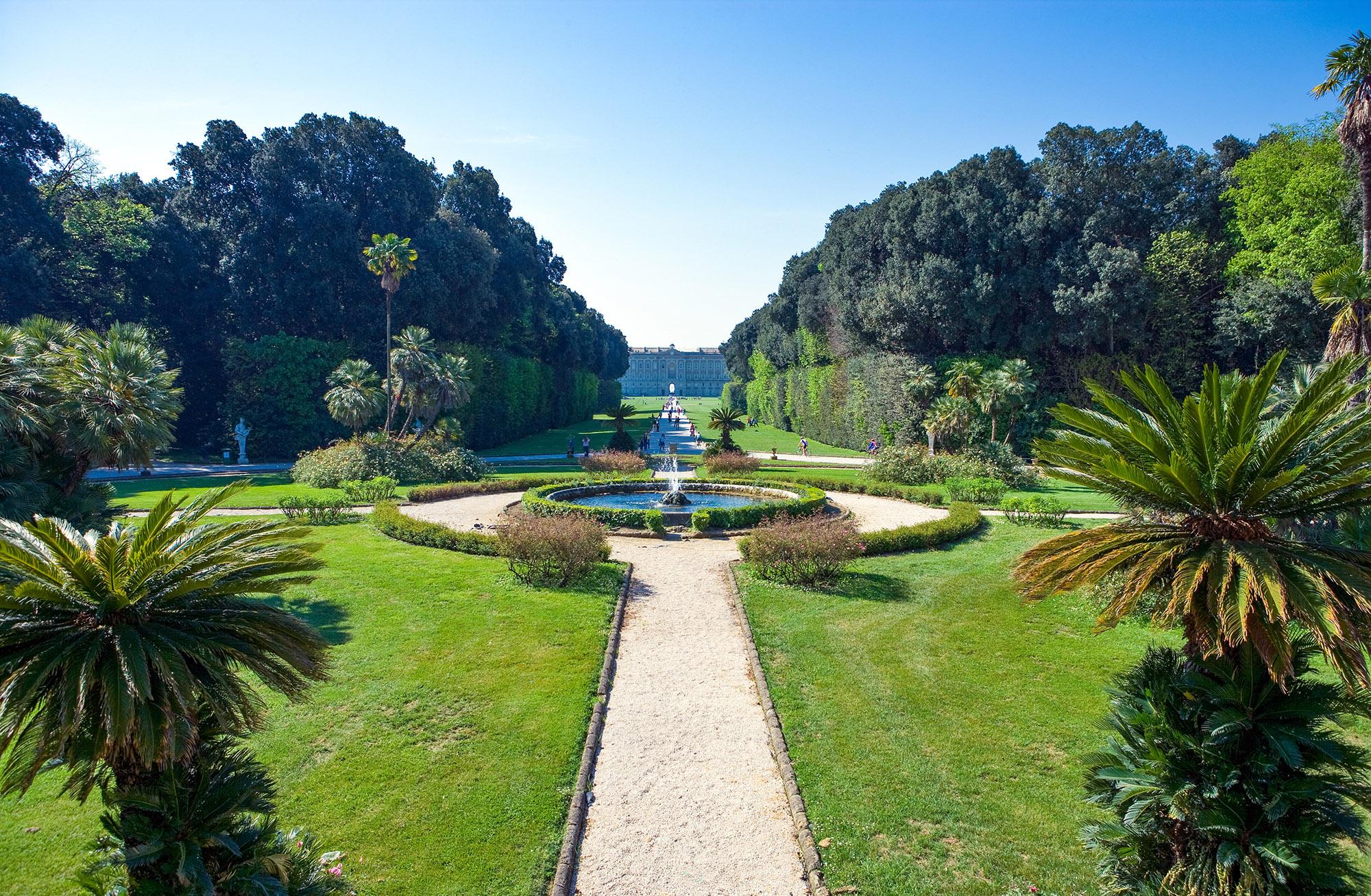
How to Get There
Easily accessible by car, taxi, bus, or train, the Royal Palace of Caserta is 38 kilometres from Naples and 200 kilometres from Rome.
From Naples Central Station there are trains every 20 minutes. From Rome Termini (railway station) there are 4 Eurostar "fast" lines per day and trains every 30 minutes. Every hour, there is dedicated bus service from the Naples Port and Naples International Airport. Every two hours, there’s a bus from Roma Fiumicino International Airport. Every 30 minutes, there’s a bus from Rome Termini (railway station).
When to Visit
The Royal Palace of Caserta is a year-round destination, but its extensive gardens are at their best in spring and summer. The complex is closed on Tuesdays. The Court Theatre is open only on weekends. Some days are also busier than others, including the first Sunday of every month, when there is free entrance in the Palace and a reduced ticket for the park.
How to Visit
To enjoy the Royal Palace, the park, the English Garden and “Terrae Motus” contemporary art collection, plan to spend a day in Caserta. Guided tours allow you to visit hidden locations in the park and the English Garden, and to discover the secrets inside the Royal Palace.
For those looking to add exercise while perusing the grounds, renting a bike is a great option. There are also horse carriage rides and tours in the park.
Sights and Attractions recommended by the locals
Caserta Royal Palace and Park, Italy
Royal Palace:
Opening Hours: 8.30am - 7.30pm
Ticket office closing time: 6.45pm
Last admission: 7.00pm
Exit from the museum: 7.25pm
Park:
Opening Hours: 8.30
January: last entry 3.00pm | closing 4.00pm
February: last entry 3.30pm | closing 4:30pm
March: last entry 4.00pm | closing 5.00pm
April-Sept: last entry 6.00pm | closing 7.00pm
October: last entry 4.30pm | closing 5.30pm
Nov-Dec: last entry 2.30pm | closing 3.30pm
English Garden:
Opening Hours: 8.30
January: last entry 2.00pm | closing 3.00pm
February: last entry 2.30pm | closing 3:30pm
March: last entry 3.00pm | closing 4.00pm
April-Sept: last entry 5.00pm | closing 6.00pm
October: last entry 4.00pm | closing 5.00pm
November: last entry 2.00pm | closing 3.00pm
December: last entry 1.30pm | closing 2.30pm
Historic Apartments, Park and Garden:
€ 14 full - € 2 reduced (from 18 to 25 years old) - Free up to 18 years
Historic Apartments Only (available when the park is closed):
€ 10.00 full price - € 2.00 reduced (from 18 to 25 years old) - Free up to 18 years
Parcoday only at the Corso Giannone ticket office (access to the Park and the English Garden):
€ 9 full - € 4 reduced (from 18 to 25 years old) - Free up to 18 years
Historic Apartments Only (after 5.00 pm):
€ 3.00 full price - € 2.00 reduced (from 18 to 25 years old) - Free up to 18 years
Reggia twodays:
€ 17 (afternoon and the next day)
On the first Sunday of each month, admission is free for Historic Apartments (from October to March)
